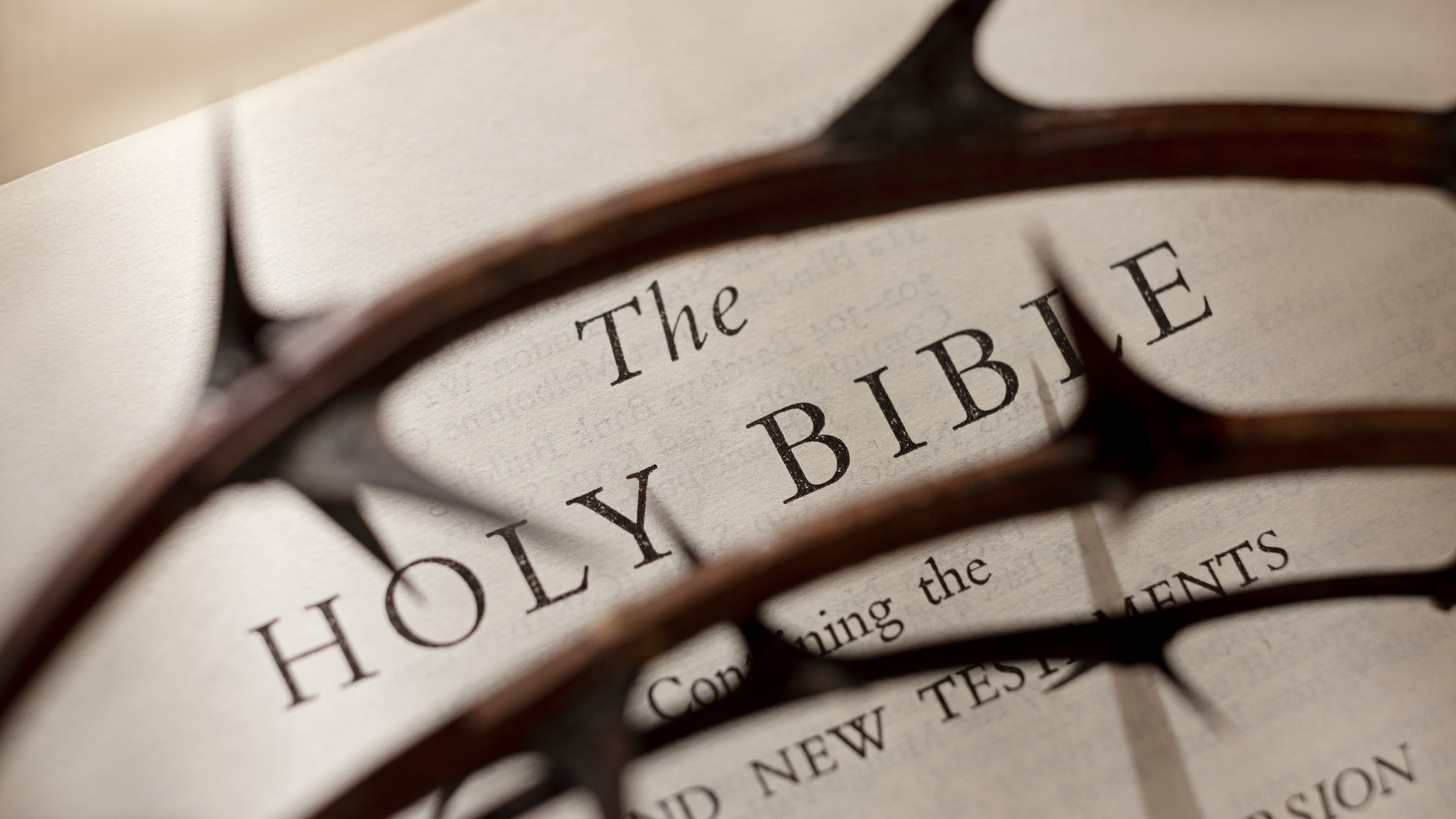Historical Context
A. Old Testament
The origins of the Old Testament, also known as the Hebrew Bible or Tanakh, trace back to ancient Israel. The development of these texts spanned over a millennium, roughly from the 12th century BCE to the 2nd century BCE.
The Old Testament is set against the backdrop of the ancient Near East, encompassing diverse cultures and empires such as Egypt, Assyria, Babylon, and Persia. The following events are central to the evolution of the tribes of Israel in the region:
- The Patriarchal Period: The lives of Abraham, Isaac, Jacob, and Joseph, who are considered the patriarchs of Israel.
- The Exodus: The departure of the Israelites from slavery in Egypt, led by Moses, and their journey to the Promised Land.
- The Conquest of Canaan: The Israelites' settlement in Canaan under Joshua's leadership.
- The United Monarchy: The reigns of Saul, David, and Solomon marked by a period of political and religious consolidation.
- The Divided Kingdom: The split of the kingdom into Israel (northern kingdom) and Judah (southern kingdom) after Solomon's reign.
- The Exile: The Babylonian conquest of Judah which led to the destruction of Jerusalem and the exile of many Jews to Babylon in 586 BCE.
- The Return and Restoration: The return of the Jewish exiles under Persian rule and the rebuilding of the Temple in Jerusalem.
B. New Testament

Source: Image by freepik
The New Testament was written in the first century CE, during the early years of the Christian church. It emerges from the context of the Roman Empire during a period of significant political, social, and religious transformation. Key historical events include:
- The Life of Jesus: The birth, ministry, crucifixion, and resurrection of Jesus Christ, primarily occurring in the regions of Galilee and Judea.
- The Early Church: The formation and expansion of the Christian community, initially centered in Jerusalem and later spreading throughout the Roman Empire.
- The Missionary Journeys of Paul: Paul's extensive travels to preach the gospel and establish Christian communities across Asia Minor, Greece, and Rome.
- The Persecution of Christians: Early Christians faced periods of persecution, notably under emperors Nero and Domitian.
- The Council of Jerusalem: A pivotal meeting around 50 CE that addressed the inclusion of Gentile converts and the requirements for salvation.
- The Destruction of the Second Temple: The Roman destruction of the Jewish Temple in 70 CE, profoundly impacting both Judaism and emerging Christianity.
Language, Structure, and Authorship
A. Old Testament
The Old Testament is made up of 39 books, divided into three main sections: the Torah (Law), the Nevi'im (Prophets), and the Ketuvim (Writings).
The Torah, also known as the Pentateuch, comprises the first five books: Genesis, Exodus, Leviticus, Numbers, and Deuteronomy. These books lay the foundation for Israel's identity and relationship with God, detailing creation, the patriarchal narratives, the Exodus from Egypt, and the establishment of the Mosaic Law.
The Prophets (Nevi'im) are divided into the Former Prophets (historical books) and the Latter Prophets (prophetic books):
- Former Prophets: Joshua, Judges, Samuel (1 & 2), and Kings (1 & 2). These books narrate the history of Israel from the conquest of Canaan to the Babylonian exile.
- Latter Prophets: Isaiah, Jeremiah, Ezekiel, and the Twelve Minor Prophets (Hosea, Joel, Amos, Obadiah, Jonah, Micah, Nahum, Habakkuk, Zephaniah, Haggai, Zechariah, Malachi). These books contain the messages of the prophets, focusing on calling Israel to repentance and foretelling future events.
The Writings (Ketuvim) include a diverse collection of books: Psalms, Proverbs, Job, Song of Solomon, Ruth, Lamentations, Ecclesiastes, Esther, Daniel, Ezra-Nehemiah, and Chronicles (1 & 2). This section encompasses poetry, wisdom literature, historical accounts, and apocalyptic visions.
The Old Testament was originally written in Biblical Hebrew, the ancient language of the Israelites. However, during certain periods, a few sections, particularly in the books of Daniel and Ezra, were written in Aramaic, a lingua franca of the Near East. Aramaic's use reflects historical influences and the geopolitical landscape, particularly during the Babylonian exile and subsequent Persian period.
The authorship and compilation of the Old Testament involve multiple contributors over centuries. Traditional Jewish and Christian beliefs attribute the Pentateuch (first five books) to Moses, although modern scholarship suggests a composite authorship involving various sources and redactions.
B. New Testament
The Holy Book of Christianity consists of 27 books, including the four Gospels, the Acts of the Apostles, the Epistles (letters) written by Paul and other apostles, and the Book of Revelation.
The Gospels of Matthew, Mark, Luke, and John provide distinct narratives of Jesus' life, teachings, death, and resurrection. Traditionally, Matthew and John are linked to apostles, while Mark and Luke are associated with apostolic figures Peter and Paul, respectively.
The Acts of the Apostles was written by Luke as a sequel to his Gospel and narrates the early church's history and the spread of Christianity.
The Epistles are letters attributed to Paul (e.g., Romans, Corinthians, Galatians) that address theological issues and provide practical guidance for Christian communities.
And finally, the famous Book of Revelation, attributed to John, is an apocalyptic text that provides a symbolic and prophetic vision of the end times.
The New Testament was written in Koine Greek, the common dialect of the Eastern Mediterranean, following the conquests of Alexander the Great. Koine Greek's widespread use facilitated the dissemination of the Christian message across diverse linguistic and cultural regions. The choice of Greek, rather than Hebrew or Aramaic, reflects the early Christian movement's mission to reach both Jewish and Gentile audiences within the Roman Empire.
Get Closer to God Today
4.9
Average Rating
|Over 5 Million Downloads
Main Theological Themes and Messages
A. Old Testament

Source: Image by vecstock on Freepik
One of the most important themes of the Old Testament and a central pillar of the Jewish faith is the Covenant – a binding agreement between God and His people, the tribes of Israel. The Covenant was established at Mount Sinai, where God gave the Law to Moses (in the form of the Ten Commandments). This covenant includes moral, ceremonial, and civil laws that guide the Israelites in their relationship with God and each other.
Prophecy is another central theme in the Old Testament, with prophets acting as God's spokespersons. They usually call Israel to repentance, warn of judgment, and offer hope for future restoration. Central to these prophecies is the anticipation of a future anointed Messiah who will establish God's kingdom. Many Christians believe these prophecies find their fulfillment in the New Testament with the coming of Jesus Christ.
B. New Testament
The main themes in the New Testament are built on Jesus's teachings. These teachings, often delivered through parables, emphasize the kingdom of God, love for God and neighbor, forgiveness, and social justice.
A central theme is the concept of salvation through grace, which is most prominently articulated in Paul's writings. Paul emphasizes that salvation is a gift from God, granted through faith in Jesus Christ, not by works of the law – a key divergence from Judaism. This doctrine of grace underscores the idea that humanity is reconciled to God through Jesus' atoning sacrifice, leading to the forgiveness of sins and the promise of eternal life.
Continuity and Discontinuity
The relationship between the Old and New Testaments involves both continuity and discontinuity in teachings and practices.
The New Testament writers frequently interpret events in the life of Jesus Christ and the early Christian community as the fulfillment of Old Testament prophecies.
For example, Isaiah 7:14 speaks of a virgin bearing a son, which the Gospel of Matthew (1:22-23) interprets as a prophecy about the birth of Jesus. Similarly, Micah 5:2 predicts the Messiah's birth in Bethlehem, fulfilled according to Matthew 2:1-6.
Isaiah 53 describes a "suffering servant" who bears the sins of many, which Christians interpret as a prophecy about Jesus' crucifixion and atonement for sin. This theme is reiterated in New Testament texts such as 1 Peter 2:24.
Jeremiah 31:31-34 speaks of a new covenant that God will establish with His people, characterized by internalized law and direct knowledge of God. This prophecy is cited in Hebrews 8:8-12 as being fulfilled through Jesus' ministry.
Many ethical teachings in the New Testament are also continuous with those of the Old Testament. The Ten Commandments (Exodus 20) continue to be upheld, as seen in Jesus' teachings (e.g., the Sermon on the Mount in Matthew 5-7) and Paul’s letters.
There are also common themes, with love and justice permeating both Testaments. Leviticus 19:18 commands love for one's neighbor, which Jesus echoed as the second greatest commandment (Matthew 22:39).
The biggest discontinuity and point of divergence between the Old and New Testaments is the change in the nature of the covenant relationship with God. The Old Covenant is seen as fulfilled and transcended by the New Covenant established through Jesus’ death and resurrection (Luke 22:20). In Christianity, man is no longer born with the sin of Adam and Eve.
The New Testament also expands the covenant community to include Gentiles, breaking down the ethnic and cultural barriers that were more pronounced under the Old Covenant. Acts 15 and the letters of Paul, especially Romans and Galatians, discuss the inclusion of Gentiles in God's people without the requirement of following Moses’ Law.
The New Testament reinterprets and often sets aside the ceremonial laws of the Old Testament, such as dietary restrictions and sacrificial practices. For instance, Mark 7:19 declares all foods clean, and Hebrews 10:1-10 explains that Jesus' sacrifice supersedes the need for continual animal sacrifices.
FAQ
How old is the Bible?
The Bible is a collection of texts written over approximately 1,500 years. The oldest parts of the Old Testament likely date back to around the 12th century BCE, while the New Testament was completed in the 1st century CE. Thus, as a complete collection, the Bible has existed for about 2,000 years.
When was the Old Testament written?
The Old Testament was written over centuries, roughly from the 12th century BCE to the 2nd century BCE. The process of writing, editing, and compiling these texts spanned a significant portion of ancient Israel's history.
How many books are in the Old and New Testaments?
The number of books in the Old Testament varies among religious traditions as follows:
- Protestant Bible: 39 books
- Catholic Bible: 46 books (includes additional deuterocanonical books)
- Eastern Orthodox Bible: 49 books (includes even more deuterocanonical books)
The New Testament has 27 books.
Where does the New Testament start?
The New Testament starts with the Gospel of Matthew.
What is the last book of the Old Testament?
In the Christian arrangement, Malachi is the last book of the Old Testament. In the Hebrew Bible, the final book is 2 Chronicles.
What language was the Old Testament written in?
The Old Testament was primarily written in Hebrew, with a few portions in Aramaic, particularly in the books of Daniel and Ezra.
When was the Old Testament written?
The Old Testament was written from approximately the 12th century BCE to the 2nd century BCE. This long period reflects the diverse historical and cultural contexts of ancient Israel.










